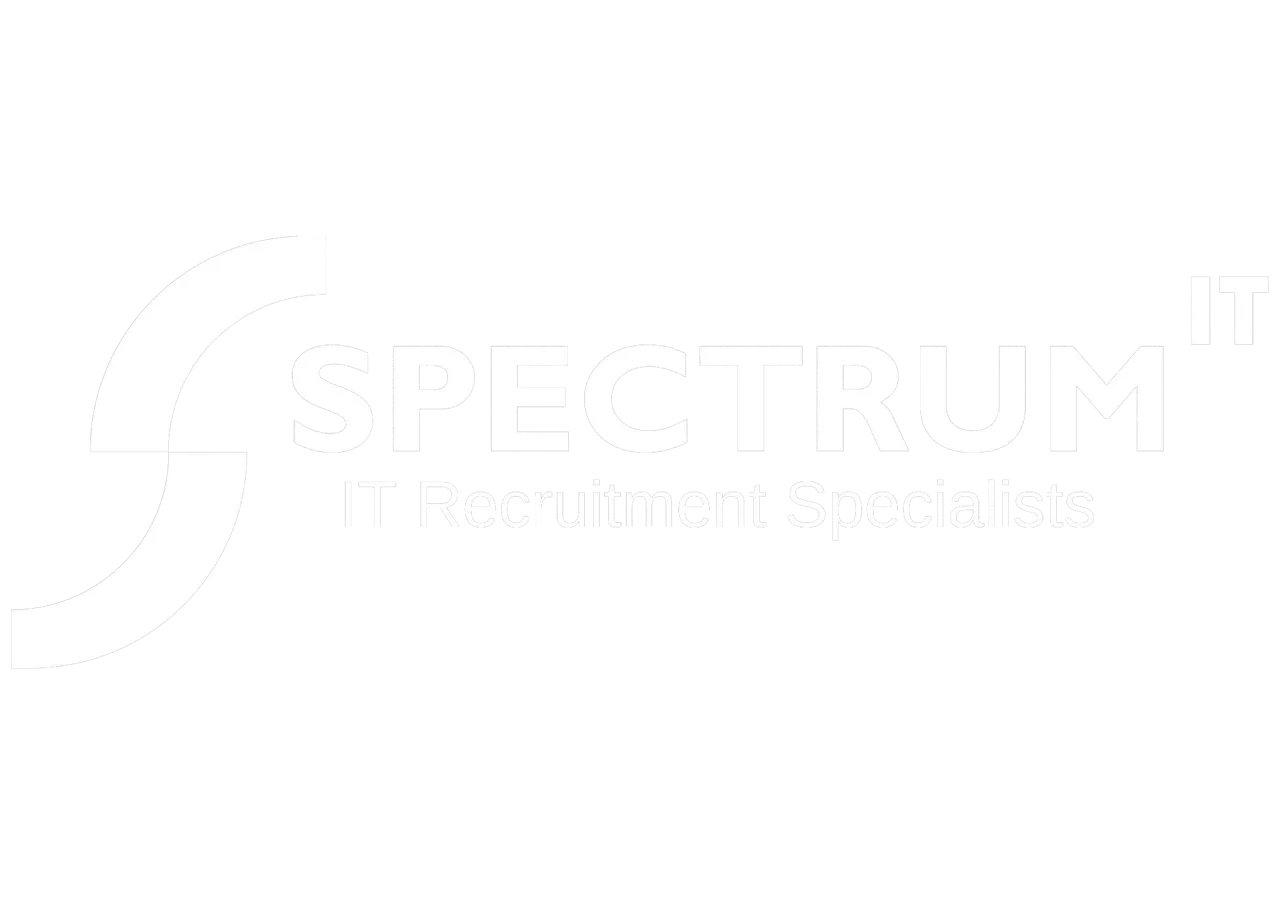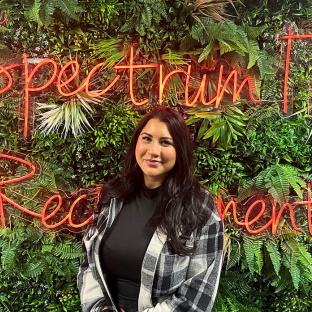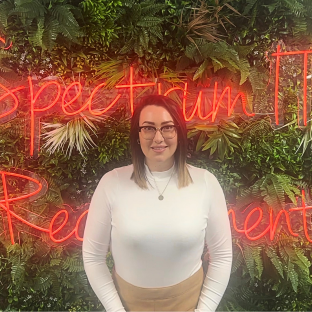
Women in Tech Hampshire - The Importance of Women in AI
24 Jul, 20259 minutes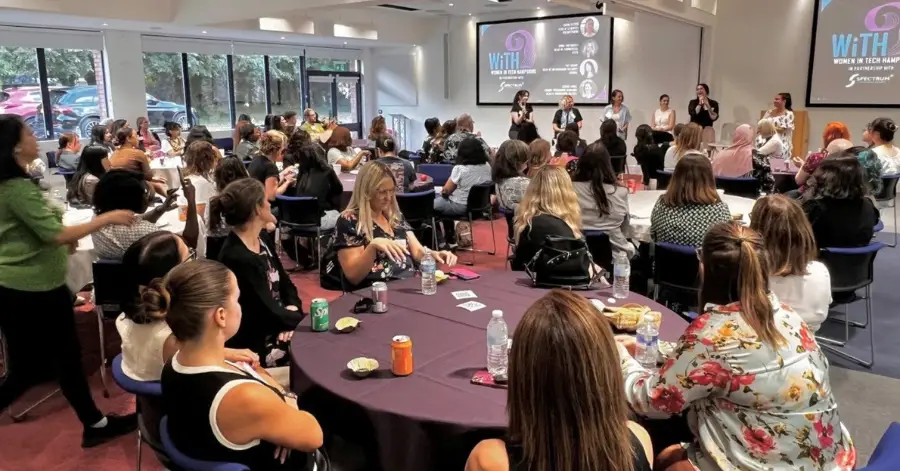
The Importance of Women in AI
It certainly felt like summer at the most recent Women in Tech Hampshire networking event in July. Not only did we welcome an incredible line-up of speakers, but it was also our summer BBQ event, and we were blessed with wonderful weather in beautiful surroundings.
We had our highest turnout to date, with over 100 attendees making connections and engaging in conversation. We welcomed quite a few men to the event too, who wanted to better understand the challenges by women in tech, to break down barriers and build more diverse teams. Our topic for the evening was on the importance of women working in AI, covering everything from ethical AI and smarter innovation, to bias in AI tools and data.
Our panel led an eye-opening and interesting conversation, looking at the critical role women play in shaping the future of technology and artificial intelligence. For this session, we were joined by:
Eirini Kateri, Lead AI Scientist at RocketPhone.ai, an experienced data scientist and PHD candidate. RocketPhone.ai uses advanced AI systems to transform customer interactions within companies.
Emma Smethurst, Head of Commercial at Etch – where she has worked since 2019, initially as a contract Production Manager, then Operations Lead. Etch integrates design and technology to enhance customer interactions and establish industry leadership.
Fay Sears, Head of IT Security at software development company Semble. Fay has a wealth of experience in cyber security and information security.
Gemma Snell, Innovation and Industry Senior Programme Manager at Health Innovation Wessex, connecting health, academia, research, technology and industry to spread innovation across the NHS.
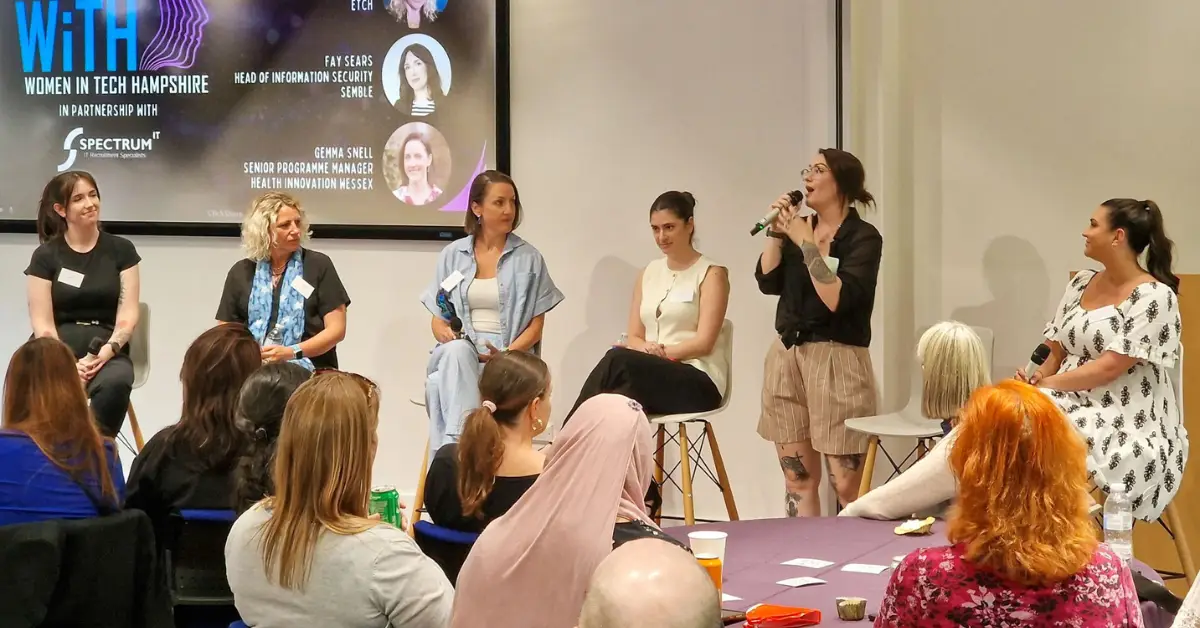
What Women Bring to AI
We launched straight into a discussion around the unique perspectives that women bring to AI development and innovation, with the main takeaway being that women help to build systems that are more inclusive.
One problem with AI is that it draws from existing datasets, and when those datasets are not themselves inclusive, there will be inherent bias in the output of the AI tools. As Gemma points out, there are already real-world consequences to biased datasets. For example, historically design and safety testing in the automotive industry is done around male bodies, making everything from impact protection to seatbelt sizing less effective for female bodies – resulting in more severe outcomes in the event of an accident. Until 1993, it wasn’t mandatory to include women in clinical trials, meaning that health data can be skewed or inaccurate. Emma points out that within financial services there are also male-dominated datasets, while Fay says that in business applications the same male-orientated data is used for both men and women. One of our attendees suggested reading the excellent Invisible Women by Caroline Criado Perez for more examples of gender bias in data and its impact.
There is a need, then, to build AI systems that are inclusive, but as Eirini points out, if only 2% of a dataset consists of women and only represents one person of colour (as was the dataset for the phD), how can the outcomes possibly reflect the real world? Inclusion needs to be considered in both the data that feeds into an AI system, as well as in the building of the system itself. It isn’t just about having a gender balance; a diverse dataset must include a range of ages, backgrounds, cultures, races and experiences – AI systems that want to appeal to a large cross-section of people must use relevant and accurate data.
Having women in the team when it comes to building, testing and implementing AI systems helps to create more inclusive systems and offers a fresh perspective over development processes. Men also have their part to play in building this diversity and the future of inclusive AI systems. As Fay suggests, women need to create male allies, but they also need to not wait to be invited into male-dominated situations and just go. Women can play a role in communicating and educating around inclusivity, while male colleagues can take the time to ask questions and really listen to the answers
Building Diverse Teams
The key to building these diverse teams is having pathways for women in AI to follow, the responsibility for which lies with tech organisations. The use of inclusive language and hiring systems are both important aspects of this, changing the narrative around women working in AI.
At the moment, 22% of AI professionals in the UK are women, which is a significant underrepresentation that increases the risk of AI systems perpetuating gender stereotypes and biases (according to this policy paper). 31% of enrolments in generative AI courses in the UK are women (source: startupsmagazine.co.uk), meaning fewer women than men are entering the industry, and with less than 10% of CTO roles globally being held by women (source: fscs.org.uk), key AI governance roles often lack female perspective. In 2021, the Office for AI published its Understanding the UK AI Labour Market research, which found that 53% of firms had no female AI employees and 40% said none were from ethnic minority backgrounds (quoted in the UK’s National AI Strategy paper).
When it comes to inclusive hiring, it’s also important to consider bias in AI-driven HR hiring tools. These tools have some amazing benefits when it comes to streamlining recruitment, but it’s essential to understand how to use these tools to ensure diversity. As Fay points out, it’s all about due diligence and using AI to create a balance. AI-driven tools reflect the, often unconscious, bias that goes into them. Emma says it’s all about resilience and training, and that policies and procedures need to be benchmarked for AI against usual KPIs, holding AI tools to the same standard as human-based decisions.
This led to an interesting conversation in the room about AI’s flaws reflecting human behaviour – the mistakes it makes could just as easily have been made by a human, but the negative narrative around AI means we make harsher judgements of it. One audience member commented that AI is holding a mirror up to our own actions, which can make some people feel uncomfortable as it uncovers unconscious bias. It comes down to changing the thought process and data that goes into these AI tools, rather than changing the tool itself.
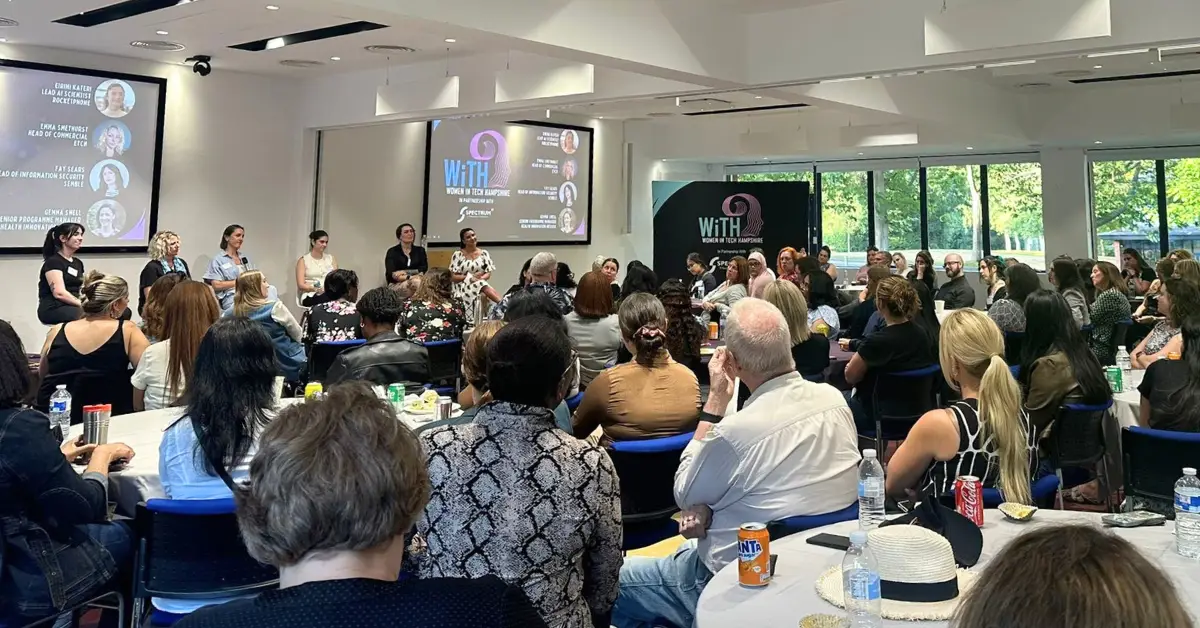
AI doesn’t (yet) come with the same unconscious gender bias that some other job roles do, such as ‘Doctor’ (male) and ‘Stay at home parent’ (female). It’s relatively gender neutral in the collective conscious, as we’re not exposed to these new job titles, such as AI professional or Prompt Engineer. There is nothing holding women back from pursuing these positions, something that needs to be taught, nurtured and encouraged from childhood. When it comes to building inclusive teams, Eirini agrees that we need to be starting young, teaching youth about the importance of inclusive data and tools, as well as implementing inclusive hiring strategies. She also suggests that mentoring programmes can help people better understand AI and what feeds into it.
Another point from Eirini was that it’s important for women to realise that AI isn’t just for those with specific AI skills or backgrounds; her background, for example, is in maths. AI benefits from a diversity of expertise, whether someone comes from law or tech, etc. Emma reiterates this point, saying that AI is a level playing field and encourages women to be accountable for their own journey and not waiting to see what comes next. Within the AI field there are so many different roles, such as compliance, ethics, safeguarding, programming, machine learning, cybersecurity and more, opening different career progressions and pathways from many different industries. Gemma was enthusiastic about encouraging women to consider AI and to be bold; your future isn’t yet set, so why not apply for that AI role and embrace change?
Embracing the Role of AI
AI is inevitably becoming more a part of our day-to-day working life, whether we work with it directly or use it as part of our workflow. There was an interesting discussion in the room around seeing AI as another employee, a part of the team that can be used to benefit the work, rather than as a replacement for anyone’s roles. As Gemma says, it’s not about AI taking over people, but rather it will come down to people who are effectively using AI vs those who aren’t.
We asked our panellists why they thought that AI is more likely to impact women’s jobs in tech, to which Eirini explained that women are more ‘T-shaped’ in their approach to work, meaning that women can combine deep expertise in one specific area with a broad understanding and ability to collaborate across many other areas. Therefore, women may be more likely to use AI to support them in aspects of their role – women are, statistically, more likely to multitask, taking on many projects and tasks at once, sometimes driven by having imposter syndrome or wanting to people please. AI can help to manage this; embracing these tools can ensure the workload is met, whereas men may be less likely to take on multiple tasks in the first place, having less cause to feel they need to ‘prove’ themselves in a tech role. However, as Eirini points out, tech companies should be promoting the use of AI within teams for inclusivity, and everyone needs to embrace AI, not just women.
Opening out to the room, some attendees noted that when they had been told or it was implied that AI could replace their role, it often came from someone who didn’t know what it was they did. As women often multitask across roles, as mentioned, across many projects, AI couldn’t replace all that that encompasses.
We rounded off the evening by taking it back to that initial key point – inclusivity in AI is not optional; it’s essential for creating systems that cater to a diverse cross-section of people. It’s up to those working in or with AI now to be proactive in building and creating systems that reflect real-world diversity, which starts with more diverse datasets, inclusive AI teams and a growth mindset to evolve alongside the technology.
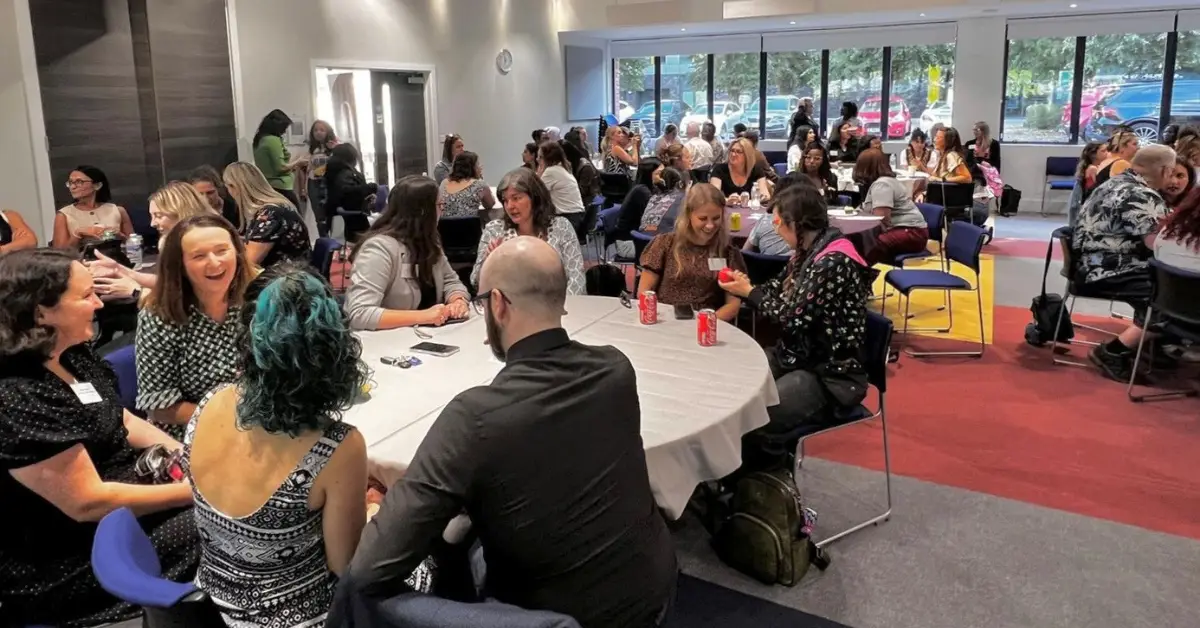
Our next event will be in October so check out our Women in Tech Hampshire LinkedIn page to find out more when it’s announced and to book your space. In the meantime, the group is a good way to connect with other likeminded women working in the tech space.
